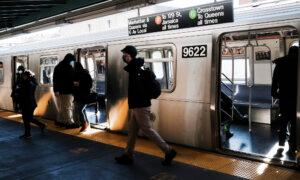Cuomo Tops NYC Mayoral Race; Democratic Socialist Gains Ground, According to Poll
NEW YORK CITY—A new poll ahead of the mayoral election indicates that former governor Andrew Cuomo has established a significant lead, while Democratic Socialist Zohran Mamdani has surged to second place, moving up from the bottom tier for the November 2025 election.
Cuomo’s support has risen from 33 percent in February, prior to his official announcement to run for mayor. His increasing popularity persists despite recent backlash regarding his management of nursing homes during the COVID-19 crisis and ongoing sexual assault allegations.
Spencer Kimball, the executive director of Emerson College Polling, analyzed Cuomo’s position in the race, stating: “With approximately three months until the Democratic Primary, Governor Cuomo has emerged as the leading candidate, with no definite alternative arising among Democratic voters.”
Kimball noted that Cuomo enjoys considerable backing from older demographics and minority groups.
“Support for Cuomo tends to increase with the age of voters, with 21% among those under 30 and 44% among those over 70. Both Ramos and Mamdani share the youth vote (under 30) at 16% each. Among Black and Hispanic voters, Cuomo garners 47% and 45% support, respectively.”
Cuomo’s campaign focuses on issues such as housing affordability, safety in public spaces and subways, creating a “clean and livable city,” addressing homelessness and mental health, and combating anti-Semitism.
Notably, Mamdani’s rise in the polling data marks an increase from 1 percent to 10 percent among Democratic voters’ primary choices, placing him second above Adams’s 8 percent.
Mamdani is utilizing concise and impactful videos to convey his message on platforms like X, YouTube, and Instagram, which have racked up millions of views across his social media accounts.
As a progressive, Mamdani’s key campaign points include freezing rent for rent-stabilized apartments, enhancing public transportation by making buses free, offering free childcare, and establishing city-owned grocery outlets that provide produce at wholesale rates.
The polling also examined a hypothetical general election scenario where Eric Adams runs as an independent against Democratic nominee Cuomo, Republican nominee Curtis Sliwa, and independent Jim Walden. In this scenario, Cuomo would secure 43 percent of the vote, with Sliwa receiving 13 percent, Adams garnering 11 percent, and Walden capturing 4 percent.
Emerson College data indicates that 66 percent of surveyed New Yorkers disapprove of Adams’s performance as mayor, with only 18 percent showing approval. Adams’ collaboration with the Trump administration is also viewed negatively, as 63 percent prefer the next mayor to confront the current administration.
One-third of respondents indicated that public safety should be the mayor’s main priority, while 23 percent pointed to housing, and 10 percent highlighted the immigration crisis. Issues like healthcare, homelessness, and job creation received single-digit responses.
Supporting the focus on safety, 48 percent of those polled believe the NYC subway has become less secure, while 20 percent perceive improvements, and 32 percent feel it has remained unchanged.
Among respondents, 46 percent wished to maintain the city’s sanctuary laws, compared to 34 percent who sought their repeal, while 19 percent were undecided.
Kimball noted, “Voters across all age groups believe NYC should uphold its sanctuary city designation rather than revoke sanctuary laws, with stronger sentiments among those under 40 and over 70, both at 50%.”
Views on congestion pricing are sharply divided, with 44 percent advocating for its end, 42 percent for its continuation, and 14 percent undecided.
“White voters show the highest support for keeping congestion pricing at 51%, while opposition comes primarily from Black and Asian voters, at 53% and 52%, respectively,” Kimball stated.
The Emerson College poll surveyed 1,000 New Yorkers, of which 653 were Democratic Primary voters. The margin of error stands at 3 percent, and the survey was conducted through text messages and automated phone calls.





